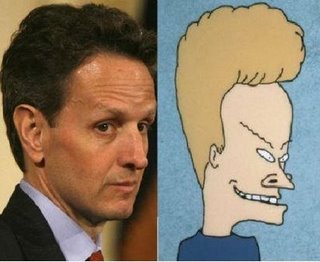Mitt Romney’s choice of Paul Ryan as his running mate will do more so solve President Obama’s voter apathy problem than it will do to boost the enthusiasm of Republican voters. While the Tea Party branch of the Republican Party complains that “Massachusetts moderate” Romney is not a significant alternative to Barack Obama, the Democratic Party’s base complains the bank-centric Obama administration is indistinguishable from a Romney administration. Criticism of the Obama administration’s domestic surveillance program comes from across the political spectrum. One need look no further than the Business Insider to find disappointment resulting from the Obama administration’s efforts to turn America into a police state.
As the Democratic Party struggled to resurrect a fraction of the voter enthusiasm seen during the 2008 campaign, Mitt Romney came along and gave the Democrats exactly what they needed: a bogeyman from the far-right wing of the Republican Party. The 2012 campaign suddenly changed from a battle against an outsourcing, horse ballet elitist to a battle against a blue-eyed devil who wants to take away Medicare. The Republican team of White and Whiter had suddenly solved the problem of Democratic voter apathy.
I recently expressed the opinion that the only logical candidate for Romney to select as his running mate would have been Ohio Senator Rob Portman. In the wake of Romney’s selection of Paul Ryan, a number of commentators have emphasized that Portman would have been a smarter choice. Polling wiz Nate Silver recently voiced a similar opinion:
Politics 101 suggests that you play toward the center of the electorate. Although this rule has more frequently been violated when it comes to vice-presidential picks, there is evidence that presidential candidates who have more “extreme” ideologies (closer to the left wing or the right wing than the electoral center) underperform relative to the economic fundamentals.
Various statistical measures of Mr. Ryan peg him as being quite conservative. Based on his Congressional voting record, for instance, the statistical system DW-Nominate evaluates him as being roughly as conservative as Representative Michele Bachmann of Minnesota.
* * *
Because of these factors, a recent analysis I performed placed Mr. Ryan 10th from among 14 potential vice-presidential picks in terms of his immediate impact on the Electoral College. If Mr. Romney wanted to make the best pick by this criterion, he would have been better off to choose an alternative like Senator Rob Portman of Ohio, or Gov. Bob McDonnell of Virginia.
Nate Silver was not alone with his premise that Romney’s choice of Ryan was made out of desperation. At the Right Condition blog, Arkady Kamenetsky not only emphasized that the Ryan candidacy will help galvanize Obama’s liberal base – he went a step further to demonstrate that the Ryan budget is a “smoke and mirrors” pretext for preserving the status quo. After highlighting Ryan’s support of TARP, Medicare Part D and No Child Left Behind, Arkady Kamenetsky performed a detailed comparison of the Ryan budget with the Obama budget to demonstrate a relatively insignificant difference between the two. Kamenetsky concluded the piece with these observations:
So this of course begs the question, why did Romney do this? Why select a VP that will provide such easy ammunition for the Left with virtually no reward? The answer is quite simple. Romney and Ryan represent exactly the same problem even if one appears to be a moderate and the other appears to be an epic fiscal warrior. The Republican party fights for and pushes through the status-quo. The images you see up above and the Ryan record is the status-quo. No doubt about it.
Yet Romney is counting on the ignorance of Republican base to run with the facade of Ryan’s conservatism. If that illusion holds then Ryan’s image will invariably boost Romney’s own image as many will view Romney’s decision as courageous and bold despite Obama’s willingness to distort Ryan’s budget. In other words, you are witnessing a most fantastic and glamorous circus. A bad Hollywood movie, except that ending will be quite real and not something you can pause or turn off.
* * *
Romney and Ryan will lose in November and the image of the heartless Conservative killing granny will resonate with America, the tragedy of course is that neither Ryan or Romney are willing to actually cut anything! The tragedy will become even more amusing as we will witness a nasty and partisan fight further dividing Americans as they fight and defend differing policies with the exact same results.
During the coming weeks, watch for efforts by the mainstream news media to portray this election as a close contest – in their own desperate attempts to retain an audience for what will probably turn out to be the least exciting Presidential campaign since Reagan vs. Carter.
